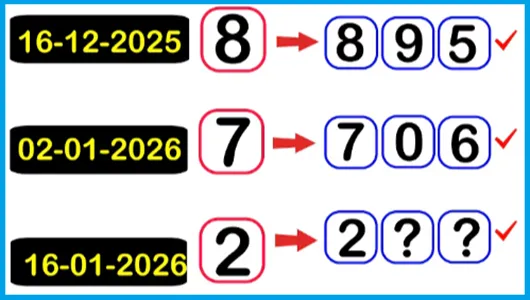One piece of exercise is often given to dieters until you reach satiety – that is, until you feel full.
The problem is that different foods can have very different effects on hunger and stress.
For example, 200 calories of chicken breast may make you feel full, but it can take up to 500 calories in a single effect.
That way, losing weight is not just about eating until you feel full. It’s about choosing the right foods that make you feel the least calorie-filled.
How does the food fill up?
Many factors determine the nutritional value of a food, or how much it is consumed relative to its calorie content. Calorie / satiety ratio is measured on a scale called satiety index (1 Trusted Source).
The satiety index also measures your ability to eat, feel good, reduce your appetite, and decrease your calorie intake during the day.
Some foods do a good job of satisfying hunger and preventing overeating.
Filling food has the following characteristics:
High volume: Studies show that the amount of food consumed is strongly affected. When there is a lot of water or air in the food, the volume is increased without calories (2 Trusted Source, 3 Trusted Source).
High protein: Studies show that protein is high in carbs and fats. High nutrients in protein increase satiety and lower calorie intake than low protein diets (4 Trusted Source, 5 Trusted Source).
High Fiber: Fiber provides bulk and helps you fill. It also slows down the movement of food through your digestive tract, making you feel fuller longer (6 Trusted sources)
Low energy density: This means that food is reduced in calories in its weight. Low energy density foods help you feel full of low calories (7 Trusted sources).
So if you eat foods with the aforementioned qualities, then you can usually eat them to the full without consuming too many calories.
Here are 12 filling foods that you can eat without much fat.
1. Boiled potatoes
Because of the high carb content, many people avoid potatoes when trying to lose weight, but they should not.
Whole potatoes contain vitamins, fiber, and other important nutrients. They also contain a special type of starch called resistant starch (8, 9 Trusted sources).
Resistant starch contains half the calories of regular starch (2 instead of 4 calories per gram). In your digestive system, it acts much like soluble fiber, leaving you feeling full.
Because the addition of starch resistant to food helps to satisfy hunger, people need to eat less calories (10 Trusted Source, 11 Trusted Source).
Interestingly, cooling them after baking potatoes increases their resistant starch content. In fact, studies show that cooling and heating the potatoes several times increases their appetite suppressant effect (12 Trusted Source).
In one study that measured the ability of 38 foods to satisfy hunger, boiled potatoes rank higher (1 trusted source).
While boiled potatoes were the most satisfying to try, the fried potato chips are down three times.
2. Whole eggs
Eggs are another food that has been unfairly demonic in the past. The truth is, eggs are incredibly healthy and high in many important nutrients.
Most nutrients, including half the egg protein, are found in the yolk.
Eggs are a complete protein, meaning they contain all nine essential amino acids.
In addition, they are very filling.
Several studies have found that people eating eggs for breakfast were more satisfied and consumed less calories throughout the day than those who had breakfast for breakfast (13 Trusted Sources, 14 Trusted Sources, 15 Trusted Sources).
Specifically, one study found that egg eaters for breakfast lowered their Body Mass Index (BMI) and lost weight more than those who ate beagles (16 Trusted Source).
3. Oatmeal
Oatmeal is a type of porridge, or hot cereal, which is often eaten at breakfast.
It fills in astonishingly and ranks third in the satiety index (1 Trusted Source).
The main reason for this is its high fiber content and ability to drain water.
Oat is a good source of soluble fiber called beta-glucan, which helps to reduce digestion and absorb carbs (17 Trusted sources).
When comparing ready-to-eat breakfast cereals, oatmeal was better at suppressing appetite, increasing satiety and reducing calories throughout the day (18 Trusted Source, 19 Trusted Source).
4. Broth-based soup
Liquid is often considered to be less filling than solid foods.
However, research shows that soups can fill more than solid foods with the same ingredients (20 Trusted Source, 21 Trusted Source).
In one study, when the soup was eaten at the beginning of the meal, subjects ate 20% less calories in that meal (22 Trusted sources).
Numerous studies have shown that eating soup regularly can reduce calorie intake, increase motivation, and promote weight loss over time (23 Trusted Source, 24 Trusted Source, 25 Trusted Source ).
Stick to broth-based soups, as they are lower in calories than cream-based varieties.
5. Fruits
Beans, such as beans, peas and lentils, are known to source good sources of fiber and protein.
This combined with the relatively low density, makes them a filling food that also promotes weight loss (26 viable sources).
Several studies have reported that beans, peas, gram and lentils are 31% more filling than pasta and bread (27 Trusted sources).
6. Apple
Fruits are an important part of a healthy diet.
Numerous studies have shown that eating fruit is associated with low calorie intake and can contribute to weight loss over time (28 reliable sources, 29 reliable sources, 30 reliable sources, 31 reliable sources). ۔
In particular, apples score very high on the CIT Index (1 Trusted Source).
Because apples contain pectin, a soluble fiber that naturally slows digestion, they help you feel full (32 Trusted Source)
They are more than 85 پانی water, which provides volume and improves motivation without adding calories.
It is important to note that whole, solid fruit increases satiety more than clean fruit or juice, both of which are not particularly filling (33 Trusted Source)
One study considered the effects of drinking solid parts of apple, grease or apple juice at the beginning of a meal.
It found that people who eat solid portions of apples consumed 91 fewer calories than apple sauce eaters and 150 fewer calories than those who drank apple juice (34 Trusted sources).
Eating apple slices results in a higher altitude rating and lower appetite rating compared to other types of fruit.
7. Citrus fruits
Similarly in apples, citrus fruits have high amounts of pectin, which can slow digestion and enhance the setting.
The amount of water in them is also very high. Both oranges and grapes contain more than 87% water, which means they can fill you with very little calories.
It has often been suggested that eating grapes may promote weight loss.
In one study, obese obese participants lost significantly more weight than those given placebo (35 treated sources).
In another study, eating half a grapefruit three times daily for six weeks was associated with a slight weight loss and a significant reduction in the waist circumference (36 Trusted Source).
When combined with calorie restriction, drinking grapefruit or grapefruit juice before eating reduces weight by 7.1%, decreasing body fat and weight frame significantly (37 Trusted Source).
However, these results may not be significant for grapes, as drinking water before drinking has similar effects.
8. Fish
Fish rich in Omega-3 fatty acids can increase fitness in people who are overweight or obese (38 Trusted Source)
They also carry high quality proteins, which are known to be very filling.
In fact, fish motivation is higher than other protein-rich diets in the index and ranks second among all foods tested (1 Trusted Source).
One study found that the effect of satiety on fish was more prominent than that of chicken and beef (39 Trusted Source).
Another study found that participants who ate fish ate 11% less calories than those who ate beef in their next meal (40 Trusted Source)
9. Lean Leaves
Lean meat has a lot of protein and is very filling.
In fact, a high protein diet leads to lower overall calorie intake than a low protein diet (5 Trusted sources).
One study found that people ate 12 percent less at lunch after eating high protein meat in lunch, compared to people who ate more carb lunches (41 Trusted Source).
Beef ranked second highest in protein-rich foods in the incentive index, but other lean meats like chicken and pork are also weight-friendly (1 Trusted Source).
10. Cottage cheese
Cottage cheese is low in calories but high in protein.
It is also packed with healthy nutrients, including B vitamins, calcium, phosphorus and selenium.
These features make cottage cheese a friendly meal to lose weight.
One study says its effect on maturity is similar to that of eggs (42 Trusted Source).
11. Vegetables
Vegetables have low calories and high volume.
They also contain all kinds of beneficial nutrients and plant compounds that make them an important part of a healthy diet.
Plus, they have a high amount of water and fiber, both of which help to fill you up.
Research shows that salads, in particular, help to satisfy hunger, especially when eaten before meals.
In one study, participants who ate salad at the beginning of the meal ate 7–12% less calories in food (43 Trusted sources).
Another study suggests that eating salad at the beginning of the meal has increased vegetable consumption by 23%, compared with those with a basic course (44 Trusted Source).
Avoid adding high, high calorie ingredients and dressing to keep your salads low in calories.
12. Popcorn
Popcorn is a whole grain and contains more fiber than many other popular breakfast foods.
It is also high in volume, so it takes up a lot of space in your stomach despite its relatively low calorie intake.
Studies have shown that popcorn fills you more with other popular snacks like potato chips (45 Trusted Source).
Airborne popcorn is healthy. Commercially prepared or microwave popcorn can be extremely high in calories and contains unhealthy ingredients.
To keep your popcorn low in calories, avoid adding too much fat to it.
Source:healthline.com/nutrition/foods-you-can-eat-a-lot-of#section13






